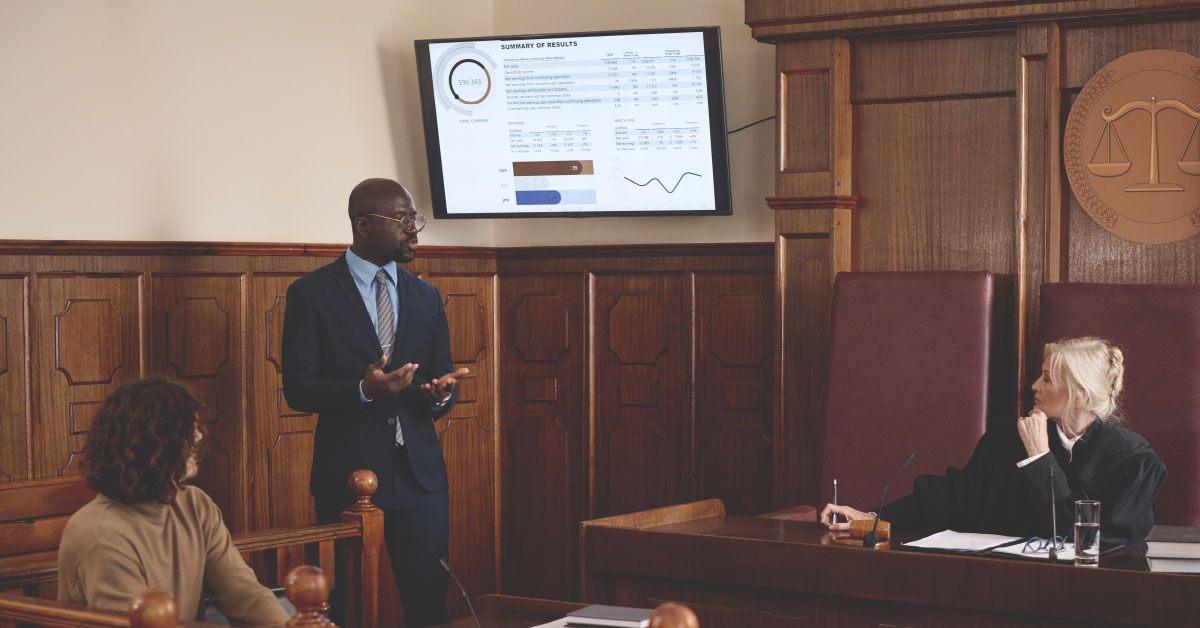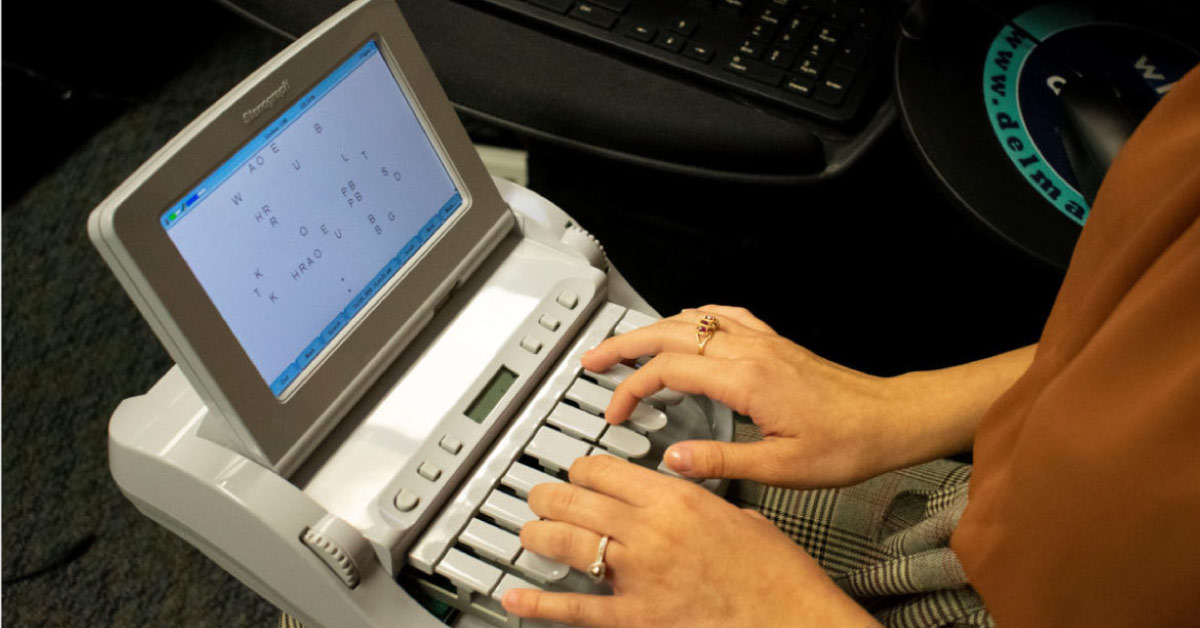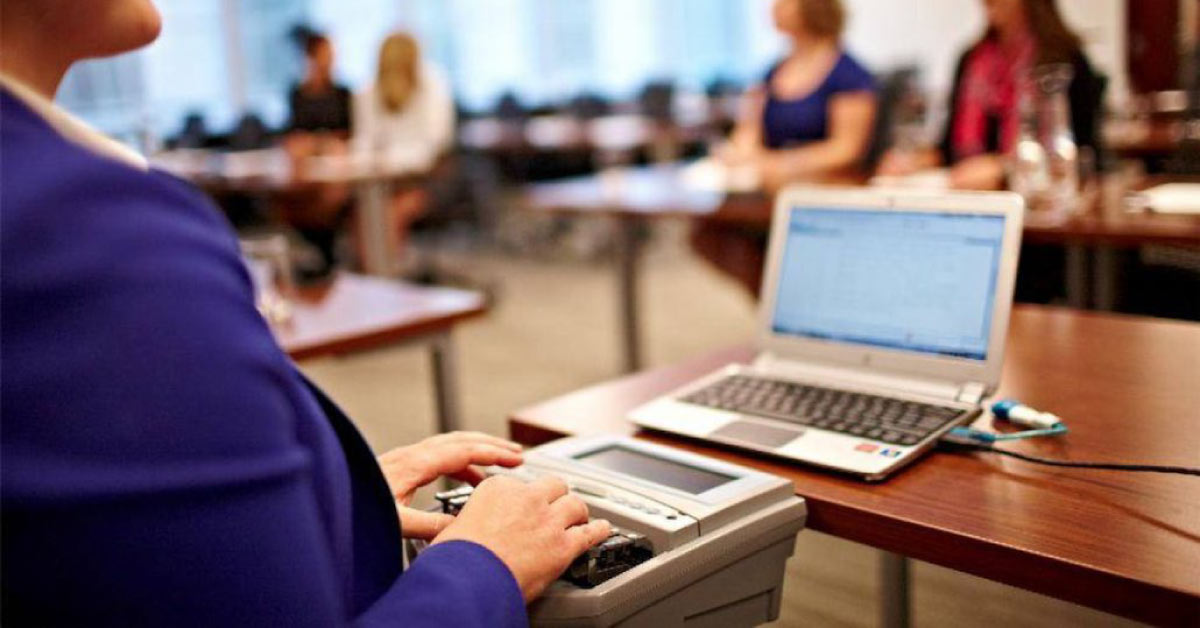What Is Legal Transcription vs. Court Reporting?
Differences and How They Work Together
November 25, 2025
Court Reporting
What Is Legal Transcription vs. Court Reporting?
At a high level, court reporting involves a trained professional capturing the spoken record in real time during live proceedings, while legal transcription converts previously recorded audio or video into a written format. Both services are essential for modern litigation, and providers like Lexitas integrate them into secure, technology-enabled workflows that support depositions, hearings, arbitrations, and trials. You can explore Lexitas’s nationwide court reporting solutions to see how live reporting fits into this broader ecosystem.
To understand which service your matter requires, it helps to start with a clear answer to this question: What is legal transcription in a litigation context?
What Is Legal Transcription?
When legal teams ask what legal transcription is, they are usually trying to clarify how it differs from a certified transcript produced by a court reporter. Legal transcription is the process of converting recorded audio or video i nto a written document. The recording might come from:- Remote proceedings captured on a video platform.
- Administrative hearings or meetings recorded in-house.
- Law enforcement interviews or statements.
- Voicemail messages or other evidentiary recordings.
Legal transcription is especially valuable when:
- A proceeding was recorded but not reported live.
- A legal team needs a written version of an existing audio or video file.
- Counsel seeks a cost-effective method for reviewing or summarizing non-critical proceedings.
- Parties require a searchable, shareable document for internal analysis or discovery.
What Does a Court Reporter Do?
While legal transcription is a written document of recorded content, court reporting is how the record is captured in real time.A court reporter is a trained professional who attends live legal proceedings and uses stenographic, voice-writing, or digital reporting technology to capture every word of testimony and on-the-record discussion. Their responsibilities typically include:
- Attending depositions, hearings, trials, and arbitrations.
- Swearing in witnesses
- Capturing live testimony with real-time or near real-time accuracy.
- Marking and tracking exhibits and on-the-record references.
- Producing certified transcripts that can be used in court or arbitration.
- Request clarifications when speakers talk over one another.
- Manage objections and read back testimony upon request.
Providing Local Court Reporters You Can Trust
Lexitas has experienced court reporters to cover your depositions and the local staff to make your job easier.
Legal Transcription vs. Court Reporting: Key Differences
Although both services create written records, there are important distinctions between legal transcription and court reporting:1. Timing of the Record
- Court Reporting: Captures the record live, with the reporter present in the proceeding.
- Legal Transcription: Occurs after the proceeding, based on audio or video recordings.
2. Status of the Transcript
- Court Reporting: Typically produces certified transcripts that carry evidentiary weight in court or arbitration.
- Legal Transcription: May or may not be certified, and its status can depend on jurisdiction and use case.
3. Technology and Workflow
- Court Reporting: Uses stenographic machines, voice writers or digital reporting tools , often with real-time feeds to counsel.
- Legal Transcription: Relies on secure upload of recordings to a platform where transcriptionists work within defined turnaround times.
4. Best-Use Scenarios
- Court Reporting: Ideal for depositions, dispositive hearings, trials, and any proceeding where a certified, official record is required.
- Legal Transcription: Well suited for internal recordings, discovery audio/video, or proceedings where a live reporter was not present.
How Legal Transcription and Court Reporting Work Together
In practice, legal transcription and court reporting rarely operate in isolation. Instead, they complement one another across the litigation lifecycle.For example:
- A deposition may be reported live by a Lexitas court reporter, producing a certified transcript. Later, counsel might need a verbatim transcription of a 911 call pertaining to the case.
- A remote hearing may be reported both in real time and recorded for redundancy. If unexpected audio issues arise during live reporting, legal transcription can be used to reconcile portions of the recording.
- Counsel may rely on court-reported transcripts for official filings, while using transcriptions of internal strategy sessions or witness prep meetings for internal analysis.
- Accept recordings for transcription via encrypted upload.
- Store transcripts in centralized, digital repositories.
- Provide consistent formatting and delivery standards.
- Maintain confidentiality and ensure compliance with applicable legal and regulatory requirements.
Where Legal Transcription Fits in the Deposition and Trial Lifecycle
To understand how each service fits into your workflow, it is helpful to look at the broader deposition process and trial preparation timeline.- Before The Deposition: Legal teams may transcribe prior recorded statements, investigator interviews, or internal briefings to prepare outlines and identify key topics.
- During The Deposition: A Lexitas court reporter provides real-time or same-day transcripts, exhibit tracking, and secure digital delivery to counsel and clients.
- After The Deposition: Counsel might request legal transcription of additional recordings, such as follow-up expert calls or related administrative hearings, to compare testimony and refine trial strategy.
- Pre-Trial and Trial: Certified court-reported transcripts form the backbone of motions, designations, and trial prep. Transcribed recordings supplement these records, giving attorneys more context and insight.
Technology, Compliance, and Quality Control
Both legal transcription and court reporting are only as valuable as their accuracy and security. Lexitas enhances each service with:- Secure digital upload and delivery to protect confidential case information.
- Standardized formatting and QA review, reducing inconsistencies across multiple matters.
- Experienced professionals with years of litigation support experience.
- Integration with other litigation services, such as record retrieval and trial support services.
Choosing the Right Service for Your Next Matter
When you are deciding between legal transcription and court reporting, consider:- Do you need a certified, official transcript?
- Is the proceeding happening live, or is it already recorded?
- Will the transcript be used for court filings, internal analysis, or both?
- Do you need real-time access during the proceeding, or is post-event turnaround sufficient?
Lexitas helps legal teams blend both services into a cohesive, secure workflow. From live reporting to post-event transcription, Lexitas provides accurate, reliable records that move cases forward.
Ready to align your next proceeding with the right level of support? Schedule your next deposition with a trusted Lexitas reporter and integrate transcription as needed to round out the record.
Related Resources

Articles
Court Reporting
Top 5 Legal Industry Trends 2025: AI, Compliance, Trial Prep
Explore the top legal industry trends for 2025, including AI in legal, compliance, and trial preparation. Learn how firms adapt with secure, expert support.
Read More
Articles
Court Reporting
How to Find a Court Reporter: Choosing the Right Provider
Find a court reporter with the right provider—ensure accuracy, security, and efficiency with expert services, real-time transcription, and remote depositions.
Read More
Articles
Court Reporting
What is Court Reporting?
Learn what court reporting is, how it supports legal proceedings, and why professional expertise is essential for accuracy, compliance, and due process.
Read More